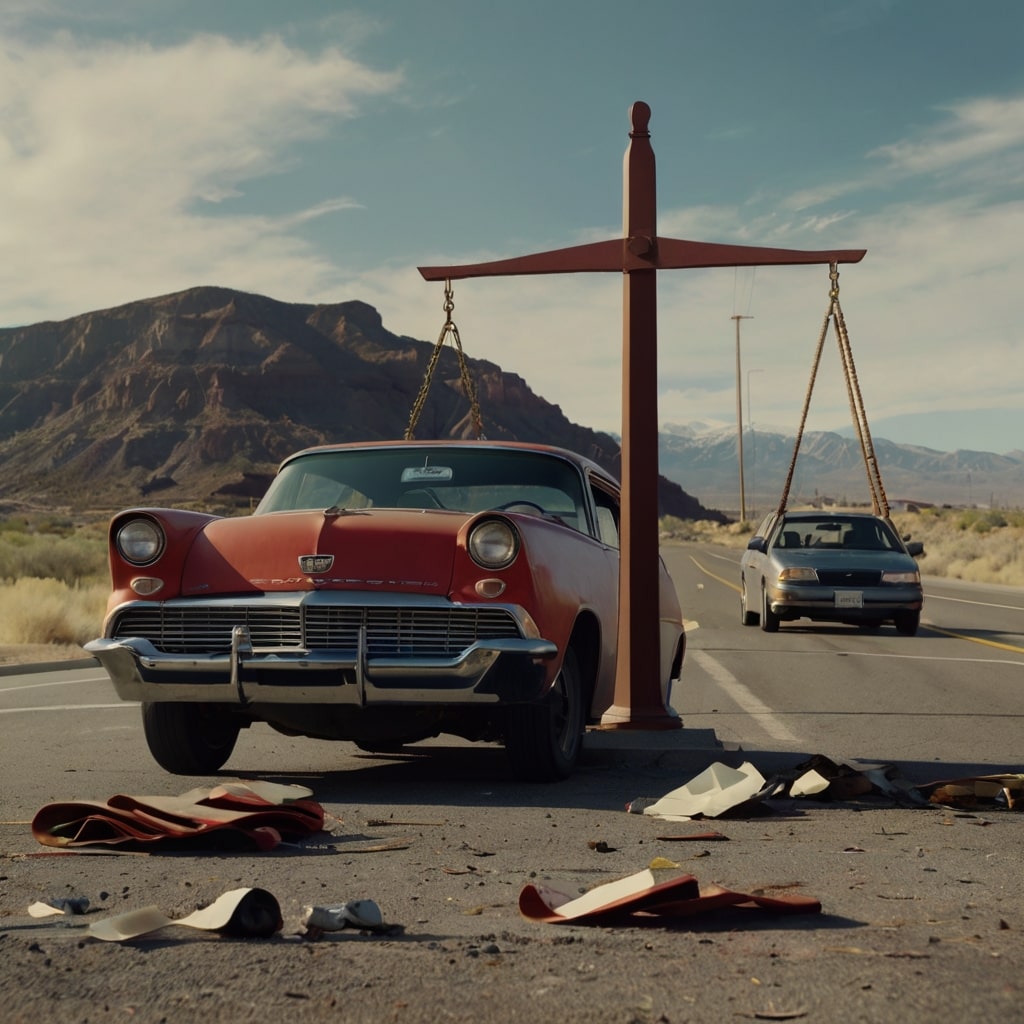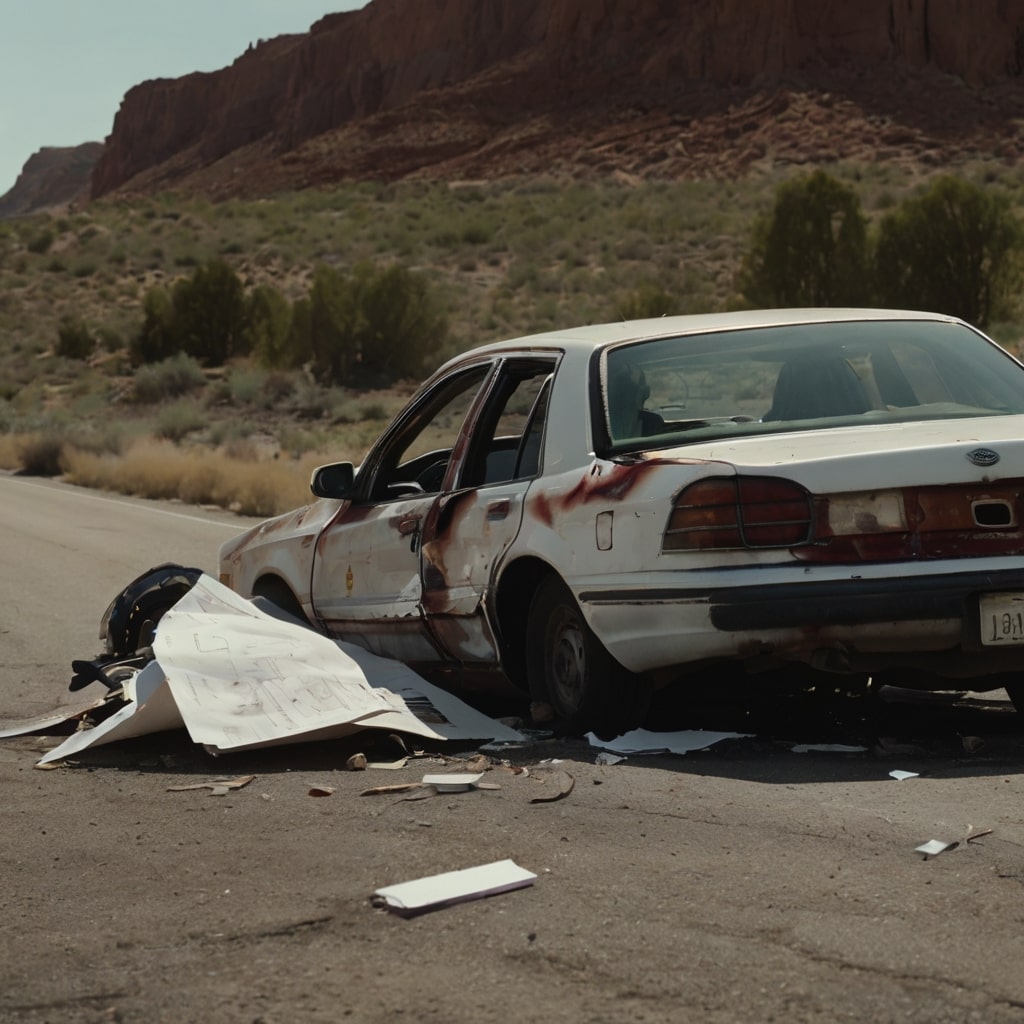Imagine being involved in a car accident, only to discover that your insurance company is blaming the other party for the entire incident.
Accidents can be devastating enough on their own, but when combined with confusing legal jargon and unclear policies, it’s easy to feel lost and helpless. In Utah specifically, navigating the complex web of comparative negligence laws can be overwhelming.
By understanding how these laws work in your state, you’ll gain a clearer sense of what to expect after an accident and how best to protect yourself from unfair claims or settlements.
As we dive into the ins and outs of Utah’s comparative negligence laws, you’ll learn how to effectively navigate the process, build a stronger case against at-fault parties, and potentially secure fair compensation for your injuries.
Understanding Utah’s Comparative Negligence Laws
Navigating Utah’s comparative negligence laws in accident cases can be a complex and challenging process, especially when it comes to determining who was at fault for an accident.
You see, under Utah’s law of pure comparative negligence, the court will consider multiple parties’ degrees of fault or wrongdoing. This means that even if you were partially responsible for an accident, you may still be able to recover damages from other parties involved.
The key is understanding how Utah courts weigh each party’s degree of fault when deciding who should pay what share of any resulting damage. In a nutshell, the more culpable – or at-fault – a party is found to be, the greater their responsibility for paying damages will be.
Take for instance, if you’re in an accident with another driver and it’s determined that each of your actions contributed to the crash happening. If one driver was speeding wildly and you were merely following traffic laws, then that other driver may bear a much larger share of the fault – even if both parties technically committed errors.
By grasping Utah’s comparative negligence standards, you can better navigate the often treacherous waters of accident law and protect your rights to fair compensation for any losses or injuries sustained.
The Basics of Negligence in Accident Cases
Hop on! If you’re involved in an accident in Utah, understanding the state’s comparative negligence laws can be crucial for getting fair compensation. Let’s dive into what you need to know…
In Utah, comparative negligence is used to determine fault and allocate damages when two or more parties contribute to an accident. This means that if multiple factors led to the incident, each party’s percentage of responsibility will be calculated.
For example, imagine a situation where one driver ran a red light and collided with another vehicle driven by someone who was texting while behind the wheel. In this case, both drivers would share some degree of blame for the accident. The court would calculate their respective percentages of fault to determine how much each party is liable for damages.
By understanding Utah’s comparative negligence laws, you can better navigate your claim and ensure that you’re treated fairly by insurance companies or courts. Stay informed and prepared with the right knowledge!

Calculating Fault and Liability under Comparative Negligence
Under Utah’s Comparative Negligence Laws in Accident Cases
Under Utah’s comparative negligence law, determining fault and liability after an accident can be a complex process. To ensure you receive fair compensation, it’s essential to understand how this law applies to your case.
When navigating the nuances of Utah’s comparative negligence laws, one of the biggest challenges is identifying all potentially at-fault parties involved in the accident. This might require gathering witness statements from multiple sources, reviewing security footage and police reports, collecting medical records that detail your injuries, or even conducting a thorough investigation on your own. By building a comprehensive case against responsible parties, you can increase the chances of receiving fair compensation for your injuries.
Think of Utah’s comparative negligence law as a puzzle. By identifying all the pieces – including potentially at-fault parties and gathering evidence for each one – you can build a strong case against responsible parties, which can ultimately lead to fairer compensation for your injuries. However, be aware that insurance companies may try to shift blame away from their policyholders under Utah’s comparative negligence law. By working with an experienced attorney who is knowledgeable about this process, you can increase the chances of receiving fair compensation for your injuries.
Remember that navigating complex legal issues like comparative negligence requires the expertise and guidance of an experienced attorney. Don’t hesitate to reach out for professional help if you’re unsure about how Utah’s laws apply to your specific situation.
How Judges Make Decisions Regarding Fault Allocation
In Utah, understanding comparative negligence laws is crucial for victims of accidents seeking compensation. In this article, we’ll provide an overview of how these laws apply to specific accident scenarios.
Comparative Negligence in Utah: Key Concepts
Under Utah’s comparative negligence law, each party involved in an accident can be found partially or fully liable if they contributed to the incident through their actions or omissions. For instance, let’s say John is injured in a multi-car pileup caused by another driver’s reckless behavior. Under Utah’s comparative negligence law, both drivers could share liability for the damages incurred.
You may wonder how this affects your case. If you’re unsure about how Utah’s comparative negligence laws apply to your situation, consider consulting a qualified attorney who can assess the unique circumstances of your accident and guide you through the legal process. With their expertise, they’ll help you navigate the complexities of Utah law and build a strong case for compensation.
By following these instructions, I hope that this blog post section will create a more engaging and informative content that effectively addresses Utah’s comparative negligence laws while maintaining friendly tone
Examples of Real-World Applications of Comparative Negligence
Utah’s comparative negligence law allows courts to evaluate the fault of all parties involved in an accident, even if multiple individuals contribute to a single incident. This concept is essential for understanding how liability is distributed among responsible parties.
Examples of Real-World Applications of Comparative Negligence
In Utah, when assessing fault and apportioning blame, judges consider not only individual culpability but also the relative severity and culpability of each party’s actions. For instance, a recent study conducted by the University of Utah found that distracted driving increased crash rates by 40%. In this context, if a pedestrian is struck by a driver who was speeding while texting and another driver runs the red light simultaneously, the court may determine that 70% of the fault lies with the distracted driving offender.
Let’s consider two real-world scenarios where comparative negligence comes into play:
Scenario one: A car crash involving both parties’ partial responsibility. Assume you were speeding through a red-light intersection while texting and another driver ran the same light without stopping for pedestrians. In this situation, the court will evaluate your percentage of responsibility (fault) versus that of the other driver.
If both drivers are found to be 50% at fault – you for speeding and excessive use of electronic devices, and the other driver for failing to stop at a red light – a jury may award damages accordingly. This means if your injuries totaled $100,000 in medical bills but you were half responsible due to your reckless behavior, the court might reduce those damages by 50%, leaving you with an actual award of $50,000.
Scenario two: A slip and fall injury case where both parties are partly negligent. Imagine you’re suing a property owner for injuries sustained on their premises due to a hazardous condition they failed to address properly. The jury finds that both the property owner and yourself are partly responsible – the property owner for not maintaining their sidewalk, while you were wearing flip-flops in inclement weather.
If the jury determines 30% of the fault lies with the property owner for failing to maintain their property safely and 70% lies with you for wearing inappropriate footwear, your damages award might be reduced by that percentage. This means if you were awarded $20,000 in total damages but your contribution to the accident was substantial enough to justify a 30% reduction, you’d ultimately receive $14,000.
By understanding how comparative negligence is applied in Utah’s courts and using real-world examples like these, individuals can better prepare for potential legal disputes and advocate more effectively on behalf of themselves or clients.

Challenges and Controversies Surrounding Utah’s System
Utah operates under a comparative negligence system, which can be complex and challenging to navigate when multiple parties share responsibility for an accident.
In Utah’s system, each party must prove that other defendants contributed to the harm caused through their actions or inactions. This can lead to difficulties in determining fault allocation, especially with multiple defendants involved. For instance, a car accident where all drivers were partially at fault would require jurors to consider the specific circumstances surrounding the crash.
For example, if one driver was speeding and another wasn’t paying attention, it may be difficult to determine how much each party’s actions contributed to the crash. In such cases, evidence from witnesses, surveillance footage, or physical damage assessments can help establish a clear picture of what happened.
One major challenge in Utah is that plaintiffs who are found partially at fault may struggle to recover damages due to their reduced share of blame. For example, if you’re awarded $100,000 but are deemed 20% responsible for the accident, your actual recovery would be $80,000. This highlights the importance of working with an experienced attorney who can help navigate Utah’s comparative negligence system and ensure a fair outcome.
Utah’s system is unique in that it allows plaintiffs to recover damages even if they’re found partially at fault. However, this also means that defendants may attempt to shift blame onto other parties or the plaintiff themselves. As such, having an attorney familiar with Utah law can be crucial in presenting evidence and making effective arguments before a jury.
In conclusion, Utah’s comparative negligence system requires careful analysis of fault allocation to ensure fair outcomes for all parties involved. By working with experienced legal counsel, individuals can better navigate this complex process and receive the compensation they deserve.
The Role of Insurance Companies in Accident Cases
In Utah, navigating comparative negligence laws is crucial when dealing with accident cases.
Insurance companies play a significant role in these types of cases, working to minimize liability and limit compensation payouts. They conduct thorough investigations, gathering evidence from various sources such as police reports, witness statements, and medical records. Insurance adjusters interview witnesses and victims to gather information that can be used to dispute claims or reduce the amount of damages awarded.
It’s essential for injured individuals to keep accurate records of all communication with insurance companies and their representatives. This includes documenting every conversation, including dates, times, and details discussed. Be sure to note any promises made by adjusters or other key parties involved in your case. For instance:
• An adjuster states they will consider a certain settlement offer if specific medical treatment is received.
• A representative agrees to provide additional information regarding the accident scene.
By understanding how insurance companies operate in Utah accident cases, you can better navigate your claim and protect your rights as an injured individual. Remember to stay informed about the process and be prepared to address any concerns or disputes that may arise during negotiations.
Effective Strategies for Negotiating Settlements with Insurers
Navigating Utah’s modified comparative fault system is crucial for securing fair settlements in accident cases.
Utah follows a unique approach to determining liability, where damages are reduced by your percentage of fault in an accident. This means it’s essential to accurately assess the extent of each party’s responsibility and demonstrate that clearly when negotiating settlements with insurers. A strong case built around clear demonstration of negligence can make all the difference in securing a satisfactory outcome.
For example, let’s say you’re involved in a car accident caused by another driver running a red light. By gathering evidence such as witness statements, police reports, and medical records, you can establish a clear chain of events leading up to the accident and demonstrate that the other party was entirely at fault. This will help reduce your liability for damages and increase your chances of securing fair compensation.
Effective communication is also vital throughout the negotiation process. Keeping detailed records of all conversations and correspondence with insurers can help maintain a professional tone and demonstrate your commitment to achieving a fair settlement. Be prepared to address concerns or objections they may raise, while also emphasizing your strongest evidence points.
For instance, if an insurer raises an objection about your claim for lost wages due to the accident, you can respond by pointing out specific sections of the medical records that support your request. By maintaining open lines of communication and addressing their concerns in a clear and concise manner, you’ll be better equipped to achieve a favorable outcome.
Remember that Utah’s modified comparative fault system is designed to provide fair compensation for those injured in accidents. By understanding these regulations and employing effective negotiation strategies, you can increase your chances of securing the settlement you deserve.
Courtroom Dynamics and Jury Perspectives on Negligence Claims
Utah operates on a comparative negligence system, which affects how accident victims pursue damages claims.
**How Juries Assess Blame in Utah**
This means that juries will weigh not only whether you were partly responsible but also the degree of responsibility shared between all parties involved. For instance, if a driver hits another car while texting and speeding, the jury may conclude that both drivers share some level of blame. In this case, your damages award could be reduced in proportion to how much fault is assigned to you.
To understand why juries tend to hold all parties accountable for their actions, consider this: they are tasked with determining fair compensation based on the unique circumstances surrounding each accident. When jurors assess blame, they take into account factors such as reckless behavior, failure to follow traffic laws, and potential negligence or error. In Utah courts, specific examples of these behaviors can significantly impact how juries apportion fault.
For example, if a pedestrian was walking on a crosswalk when an intoxicated driver struck them with their vehicle, the jury may view both parties as having contributed to the incident: you, for failing to use signals or wear reflective clothing; and the drunk driver, for operating under the influence. Understanding these nuances is vital in navigating accident cases and maximizing potential compensation.
By being aware of how courts assess blame and damages awards in Utah’s comparative negligence system, you can better prepare your case and achieve a fair outcome.
Expert Witnesses and Their Impact on Comparative Negligence Cases
Expert Witnesses: A Key to Navigating Utah’s Comparative Negligence Laws in Accident Cases
A good expert witness can provide objective evidence and analysis that supports your claims of damages, helping you build a strong case. Medical professionals may testify about the extent of injuries or explain how certain treatments were necessary. Forensic engineers might analyze damage to vehicles and provide testimony on the cause of collisions.
For instance, if you’re suing a negligent driver after an accident caused by their reckless behavior, an expert engineer could dissect the crash data and reveal that a faulty brake system was responsible for the collision. Similarly, in medical malpractice cases, expert doctors can explain how healthcare providers failed to meet standard care and provide testimony on the necessary treatments.
When selecting experts, it’s vital they have relevant experience and are well-versed in Utah’s laws regarding comparative negligence. They should be familiar with Utah Code § 78B-5-303, which governs fault allocation and damages between parties in a comparative negligence case. A credible expert witness can provide testimony that your injuries or damages were directly caused by the other party’s negligence.
By working closely with these experts throughout your case, you can strengthen your claim of damages and increase the likelihood of achieving fair compensation for your losses. For instance, an expert economist could analyze lost wages and future medical expenses to demonstrate the full extent of your financial loss. With a strong team behind you, you’ll be better equipped to fight for justice in Utah’s comparative negligence courts.
Furthermore, when choosing experts, consider their experience with similar cases and their ability to communicate complex information in a clear, concise manner. This will help ensure that your case is presented effectively before the court.
Navigating Utah’s Comparative Negligence Laws in Accident Cases: Key Takeaways for Victims Seeking Compensation under Utah Law
Never let uncertainty hold you back from seeking justice.
As a victim of an accident, navigating the complex web of negligence laws can be daunting and overwhelming. But it doesn’t have to be. By understanding key takeaways like comparative negligence, fault allocation, and contributory negligence, victims can confidently pursue compensation under Utah law.
With clarity comes confidence in your pursuit of justice. Taking action now means securing fair compensation for your suffering and holding the responsible parties accountable.
Take control today by educating yourself on Utah’s accident laws – you deserve nothing less than what’s rightfully yours.
